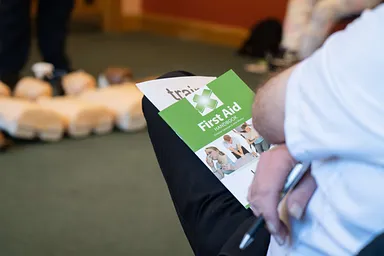It is widely known that the Automated External Defibrillator is the only proven method of treating sudden cardiac arrest; however the public are less informed on its effectiveness in treating other types of cardiac arrest.
Were you aware that it is very unlikely that an AED can be used to treat a child, someone suffering with a head injury, major blood loss, hypothermia or hypoxia (low oxygen levels)? This is not to say that their life cannot be saved but these types of casualties are often in a non-shockable rhythm and can only be treated with continuous CPR until professional treatment arrives.
The vast majority of casualties are only in a shockable rhythm when they have suffered a sudden cardiac arrest, which is usually attributed towards heart problems. Fortunately this is a very rare phenomenon in children due to their young hearts not being prone to the effects of coronary heart disease. These types of rhythms would like the following on an ECG Machine:
Ventricular Fibrillation (VF)

Ventricular Tachycardia (VT)

Non shockable rhythms are far more complicated and will require other treatment options from professional medical experts. Examples of this could be when paramedics / doctors attempt to resupply the hearts tissues with oxygen after someone has choked, or the rewarming of the inner tissues after a casualty has suffered hypothermia. Drugs are also used in order to reignite the heart and to establish normal / steady breathing.
After any cardiac arrest it is always worth someone running for the nearest AED machine; however this should not interrupt continual CPR which is pivotal in preserving the life of a casualty prior to the arrival of the emergency services.
No one should ever be alarmed if the AED prompts a No Shock as this simply means that CPR needs to be continued until the AED prompts again, or when the paramedics have fully taken control of the scene.

.jpg)
.jpg)